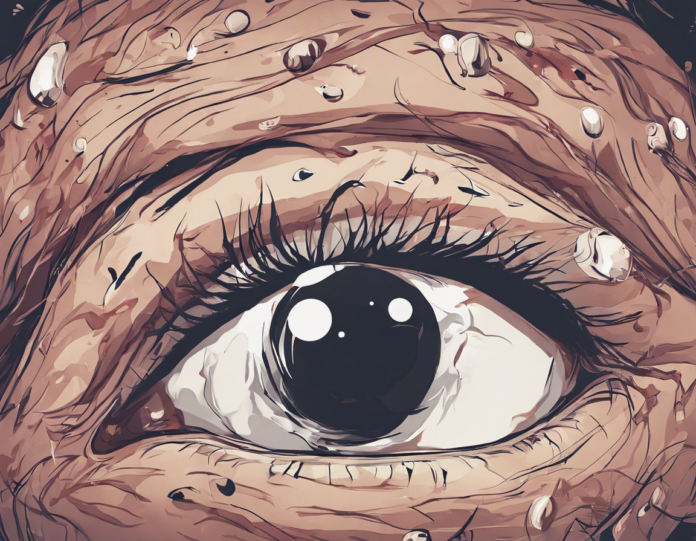Introduction
Eye flu, also known as viral conjunctivitis, is a common eye infection that can cause discomfort and irritation. It is highly contagious and can spread rapidly in close or crowded settings. Understanding the symptoms, causes, treatment, and prevention methods for eye flu is crucial for maintaining eye health and preventing its spread to others.
Symptoms of Eye Flu
Eye flu typically presents with the following symptoms:
1. Redness: The eye appears pink or red due to inflammation of the conjunctiva.
2. Watery discharge: The affected eye may produce watery discharge, often during sleep.
3. Grittiness: Individuals may experience a feeling of grittiness or sand in the eye.
4. Itchiness: The affected eye may feel itchy and irritated.
5. Light sensitivity: Bright lights may cause discomfort or sensitivity in the affected eye.
6. Swelling: The eyelids or conjunctiva may appear swollen.
If you experience these symptoms, it is essential to consult an eye specialist for proper diagnosis and treatment.
Causes of Eye Flu
Eye flu is commonly caused by viruses, including adenovirus, herpes simplex virus, and enterovirus. These viruses can be easily transmitted through:
1. Direct contact: Touching an infected person’s eye or face.
2. Indirect contact: Sharing towels, eye makeup, or other personal items.
3. Airborne transmission: Being in close proximity to someone who is infected, especially in crowded places.
It is important to practice good hygiene to prevent the spread of eye flu.
Treatment for Eye Flu
While there is no specific cure for viral conjunctivitis, treatment focuses on relieving symptoms and preventing the infection from spreading. The following measures can help manage eye flu:
1. Cold compress: Applying a cold compress can help reduce eye redness and swelling.
2. Lubricating eye drops: Using lubricating eye drops can soothe irritation and dryness.
3. Avoiding contact lenses: It is advisable to avoid wearing contact lenses until the infection clears.
4. Good hygiene: Wash your hands frequently, avoid touching your eyes, and refrain from sharing personal items.
In severe cases, your doctor may prescribe antiviral eye drops or ointments to help reduce the duration and severity of the infection.
Prevention of Eye Flu
Preventing the spread of eye flu is crucial to protect yourself and others. Follow these preventive measures:
1. Hand hygiene: Wash your hands frequently with soap and water.
2. Avoid touching your eyes: Minimize touching your eyes with unwashed hands.
3. Disinfect surfaces: Clean and disinfect surfaces regularly, especially in shared spaces.
4. Practice good hygiene: Avoid sharing towels, eye makeup, or personal items with others.
5. Stay home: If you have eye flu, stay home to prevent spreading the infection to others.
By practicing good hygiene and following preventive measures, you can reduce the risk of contracting and spreading eye flu.
Frequently Asked Questions (FAQs) about Eye Flu
1. Can eye flu spread to both eyes?
Yes, eye flu can affect one or both eyes. It is important to avoid touching or rubbing the infected eye to prevent spreading the infection.
2. Is eye flu contagious?
Yes, eye flu is highly contagious and can spread through direct or indirect contact with an infected person.
3. How long does eye flu last?
The duration of eye flu can vary, but it typically resolves within 1-2 weeks. Proper hygiene and treatment can help speed up recovery.
4. Can children get eye flu?
Yes, children can also get eye flu. It is essential to teach them good hygiene practices to prevent infections.
5. When should I see a doctor for eye flu?
If you experience severe eye pain, vision changes, or worsening symptoms, consult an eye specialist for proper diagnosis and treatment.
6. Can eye flu lead to complications?
In some cases, untreated eye flu can lead to complications such as corneal ulcers or keratitis. Seeking timely medical attention is crucial to prevent complications.
7. Can I wear contact lenses with eye flu?
It is advisable to avoid wearing contact lenses when you have eye flu to prevent further irritation and spread of infection.
8. Can eye flu be treated with antibiotics?
Eye flu caused by viruses does not respond to antibiotics. Your doctor may prescribe antiviral eye drops or ointments for symptomatic relief.
9. How can I soothe eye flu symptoms at home?
You can soothe eye flu symptoms at home by using cold compresses, lubricating eye drops, and practicing good hygiene.
10. Is there a vaccine for eye flu?
There is currently no vaccine available for viral conjunctivitis. Prevention through good hygiene practices remains the best approach.
In conclusion, understanding the symptoms, causes, treatment, and prevention of eye flu is essential for maintaining eye health and preventing its spread. By following good hygiene practices, seeking timely medical attention, and taking preventive measures, you can protect yourself and others from this common eye infection.


